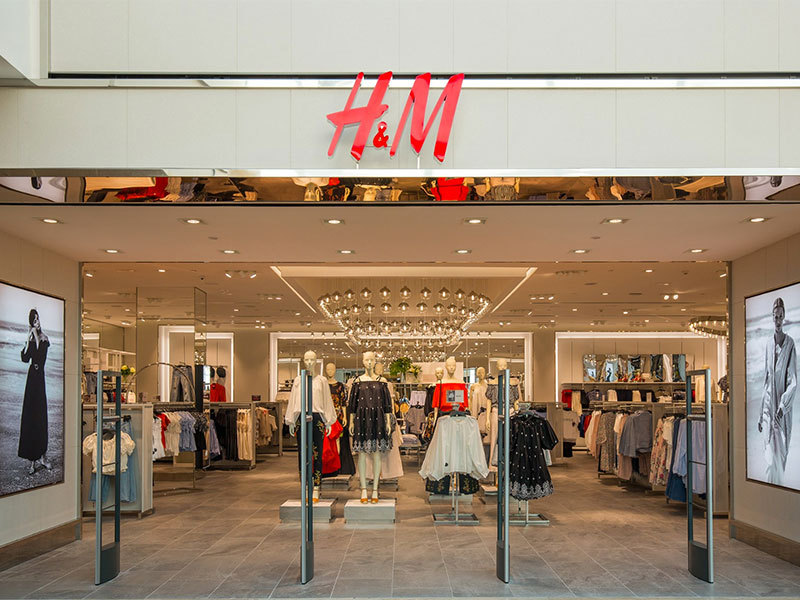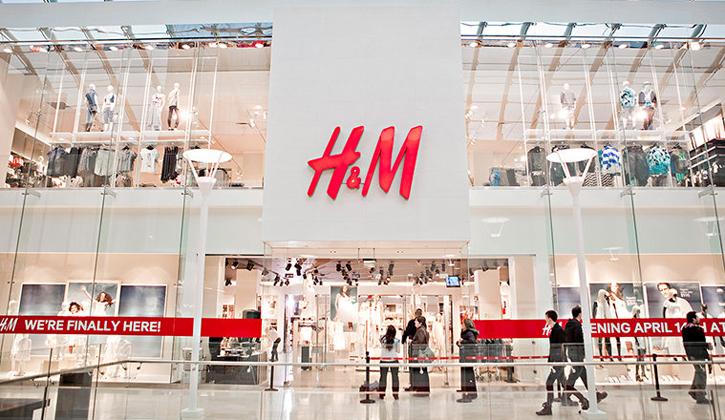In the year 1947, a person in Sweden named Erling Persson built the foundation of a brand that, in today’s time, is one of the most recognizable brands in the fashion industry. He opened a store in Sweden with the name Hennes which sold only women’s clothing. In 1968, he bought a hunting and fishing equipment store named Mauritz Widforss, which sold men’s and children’s clothing. The name of the store was then changed to Hennes & Mauritz. This famous brand was rebranded and is now known as H&M Fashion. A name that pops up in our minds whenever we think of fashion.
It opened its first store outside Scandinavia in 1976 in London, United Kingdom. The first store outside Europe was in New York City. The particular strategy that the company followed throughout its expansion was to collaborate with their competitors so that both the parties could grow together.
The company is now operating in 74 countries and is the second-largest fashion brand after Inditex. The group has the brands like H&M Home, Monki, Weekday, ARKET, Afound, Cheap Monday and H&M under its umbrella. Germany is H&M’s largest market. In 2019, 3.5 billion U.S. dollars were generated from the country alone. The company operates over 5,000 stores worldwide. It is considered to be the fourth most valuable apparel brand in the world, behind Nike, ZARA, and Adidas as of 2019.
You can access the Annual Report for the year 2019 here.
Brand strategy that H&M follows
Fast Fashion Model: The availability of designer clothes in the stores in no time and selling them at a price that the middle class can afford, is this concept of fast fashion that the company brings to the table. In short, it tries to bring the newest style in the market as soon as possible at a reasonable price.
Outsourcing: The brand doesn’t manufacture products on their own; instead, they outsource it. They have hired independent suppliers who provide them the products, at the prescribed quality in the prescribed lead time as assured by the suppliers to the company.
Marketing mix strategy followed by H&M
It includes the 7 Ps of marketing, that is, Product, Price, Place, Promotion, People, Process, and Physical evidence.
Product: It is a clothing retail company that deals with fast-fashion clothing for men, women, and children. The product range includes :
a) H&M: Variety of products from simple to designer clothes.
b) Cheap Monday: Denim accessories.
c) Monki: Trendy lifestyle collection for young women.
d) Weekday: costumes for fashionable young adults.
Price: The pricing strategy that the company follows is to introduce fashion at a little less price as compared to competitors like Zara and Armani. The focus of H&M is on cost minimization to target the price-sensitive yet quality-conscious consumers, which covers most of the middle-class consumers.
Place: H&M sells its products through stores located in all the major cities all over the world. It also offers products online through e-commerce websites like Amazon, Myntra, and Jabong (in Indian landscape) where customers receive the products at their doorsteps. The organization has been able to establish a strong network of supply chain networks in all the major countries of its operations.
Promotion: It uses a variety of channels to promotes the brand.
a) YouTube: The company has its channel on Youtube with the subscriber base of 391K+ through which it engages and communicates its branding message to a broader audience.
b) TV Advertisements: It is a useful promotional tool. Through its creative set of advertisements and campaigns all around the globe, it tries to reach its target group.
c) Promotional codes and discounts: Discounts and promotional codes are an essential part of promoting the brand for H&M. It attracts a lot of new customers and also helps in retaining loyal costumers.
People: Human capital is one of the definite keepers of the culture developed by top management at the organization. With an employee base of more than 120,000, it is a labor-intensive brand with the people working at H&M stores well trained and highly motivated. Many of them work on a rotation basis.
Process: It is essential to retain the customers and to maintain a positive relationship with them. The service delivered by the store is quick, and any query is also quickly resolved.
Physical evidence: H&M stores are generally posh and chic and remarkable in the minds of the visitors. Its first flagship store in India opened in the full glory of its global store design concept. The store’s stunning ambiance and presentation offer customers the complete H&M experience at the prestigious South Delhi mall Select Citywalk, Saket.

Segmentation, Targeting, Positioning (STP) analysis
Segmentation
The types of segmentation that H&M uses are Demographic and Psychographic segmentation.
Demographic segmentation means segmenting the market based on age, gender, region, class, income, etc. Generally, the brand offers fashionable clothes at reasonable prices, mainly focusing on middle-class people and college-going students at the age of 15 to 30 years.
Psychographic segmentation means segmenting the market based on customer interests, personality, lifestyle, social status, etc.
Targeting
The target customers of H&M are the group of people who are excited about the recent fashion trends and want to buy these fashionable clothes and accessories at an affordable price. To be more precise, these are :
College going students: This is a potential target group as they are willing to possess trendy fashion clothes and accessories at a minimal price, and that’s what H&M provides the best.
Women: This is again, important target group since the company also sells kids and men’s clothing, and it’s generally the women who shop for them.
Positioning
It’s about knowing how a particular brand is positioned in a market. H&M is particularly positioned as a brand that offers quality clothing options at the best price.
Also Read: L’Oreal Paris – Because We All Are Worth It
Entry into the Indian market
It was in the year 2015 when H&M made an entry into the Indian market. The first store was opened in Select CityWalk in New Delhi, and it created history by selling products worth Rs 1.75 crore on its opening day. In almost five years, H&M has a total of 47 stores spread across 24 cities in India. The brand is now a 1,500 crore business and has reported 43% growth in 2019.
Unlike other brands, H&M is not only confined to metro cities, but it also targets smaller cities like Raipur, Ludhiana, Dehradun, etc. The strategy and core values of the brand have been robust and straightforward enough to attract customers.
Corporate Social Responsibility
The organization has been a protector of the environment, and its efforts have been appreciated at several platforms.
Close the loop initiative: In 2013, H&M started an effort in which they have asked their customers to get the old clothes of any brand, and they can avail discounts on their next purchase. This has been done to ensure that old clothes could be processed, recycled, and could be converted into new clothes so that the concept of zero waste could be achieved. This has helped to reduce textile waste on a large scale.
Partnership with NGOs: With the collaboration with NGOs and international organizations such as WWF, WaterAid, and other societies that enable the world’s poorest people to get the basic amenities like water and food, the brand makes sure that it is making a positive impact in the society while ensuring that their practices do not harm the environment in any way.
H&M Foundation: The company has also started its non-profit institution by the name of H&M Foundation to make a difference in this society, by improving the living standards of many developing nations all across the globe.
So, overall, H&M is a brand loved by all for its values, reputation, and costumer-centric approach, and it will continue to grow in the coming years.
To read more content like this, Subscribe to our Newsletter.

